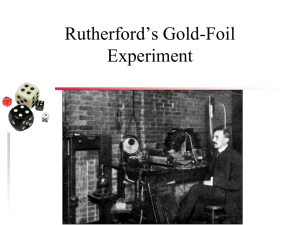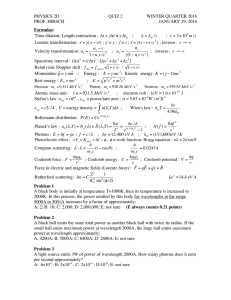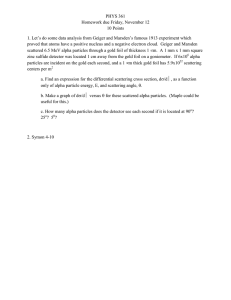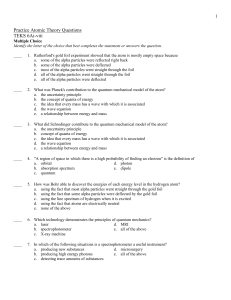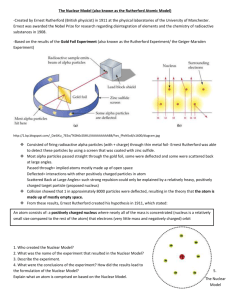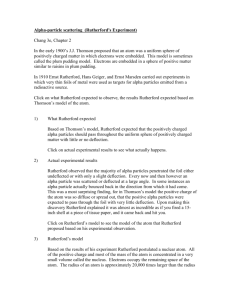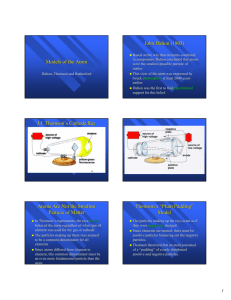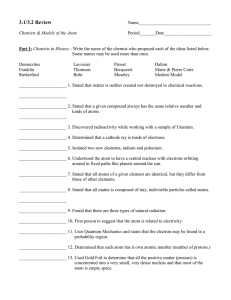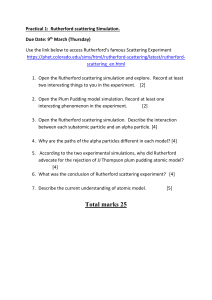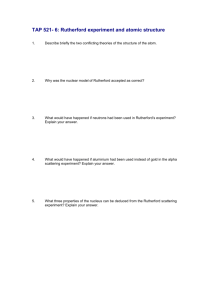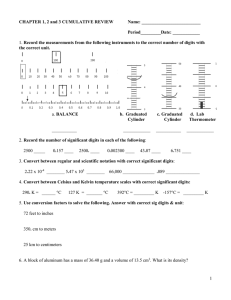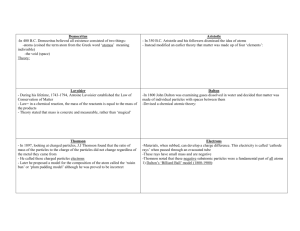experiment
advertisement
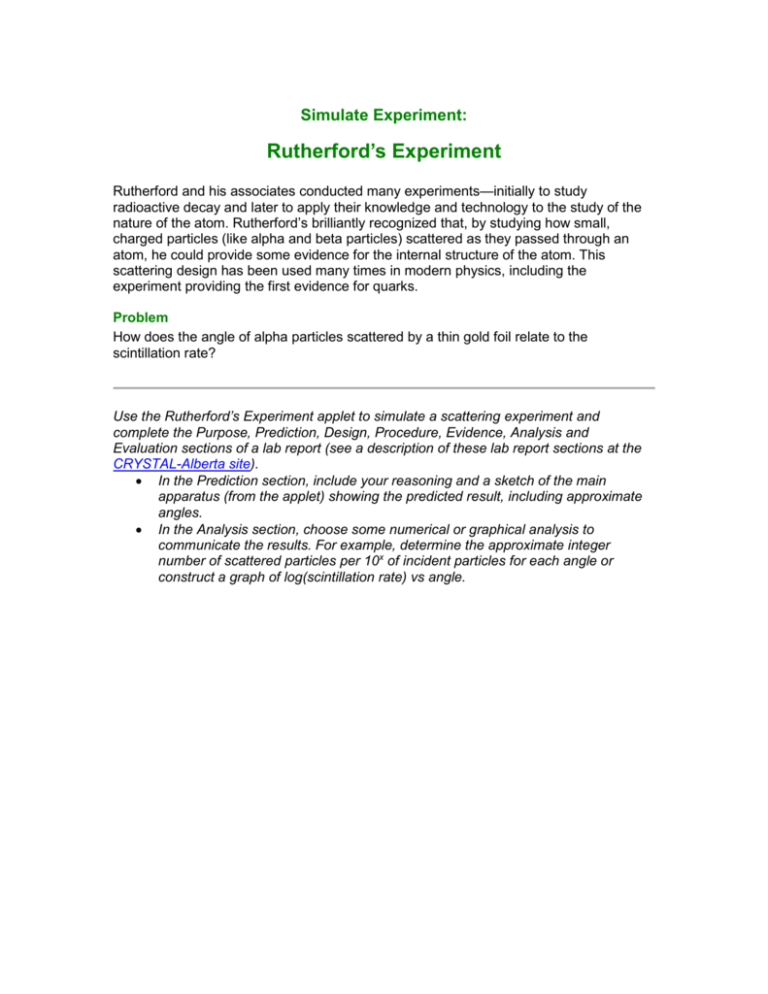
Simulate Experiment: Rutherford’s Experiment Rutherford and his associates conducted many experiments—initially to study radioactive decay and later to apply their knowledge and technology to the study of the nature of the atom. Rutherford’s brilliantly recognized that, by studying how small, charged particles (like alpha and beta particles) scattered as they passed through an atom, he could provide some evidence for the internal structure of the atom. This scattering design has been used many times in modern physics, including the experiment providing the first evidence for quarks. Problem How does the angle of alpha particles scattered by a thin gold foil relate to the scintillation rate? Use the Rutherford’s Experiment applet to simulate a scattering experiment and complete the Purpose, Prediction, Design, Procedure, Evidence, Analysis and Evaluation sections of a lab report (see a description of these lab report sections at the CRYSTAL-Alberta site). In the Prediction section, include your reasoning and a sketch of the main apparatus (from the applet) showing the predicted result, including approximate angles. In the Analysis section, choose some numerical or graphical analysis to communicate the results. For example, determine the approximate integer number of scattered particles per 10x of incident particles for each angle or construct a graph of log(scintillation rate) vs angle.
